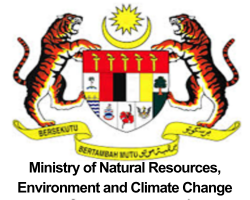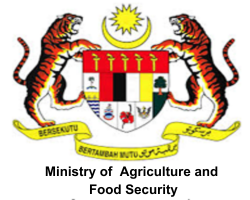Rajpar, Muhammad Nawaz and Mohamed Zakaria, . (2014) Effects of habitat characteristics on waterbird distribution and richness in wetland ecosystem of Malaysia. [Journal / Magazine]
|
PDF
12 EFFECTS OF HABITAT CHARACTERISTICS ON WATERBIRD DISTRIBUTION AND RICHNESS IN WETLAND ECOSYSTEM OF MALAYSIA.pdf Restricted to Repository staff only Download (1MB) |
Abstract
Wetlands are critical habitats for water dependent bird species. These habitats are facing rapid degradation due to anthropogenic activities that affect the waterbirds distribution by changing their habitats. The objective of the study was to examine the relationship of vegetation composition and cover and the microclimate of the Paya Indah wetlands with waterbird species. Distance sampling point count method was used to determine the waterbird species composition and relative abundance, habitat characteristics (i.e. vegetation composition and cover) by visual estimation, temperature and relative humidity by psychrometer and light intensity by lux meter. A total of 3076 individuals of 24 waterbird species representing eight families were documented during the 12 months study from June, 2009 to May, 2010. Purple Swamphen – Porphyrio porphyrio (964 observations; 27.39% of all detections) was the most dominant and Slaty-breasted Crake – Gallirallus striatus (5 observations; 0.14%) was the rarest waterbird species in the study area. The results show that 86.0% of the wetland areas were covered with a variety of aquatic vegetation such as emergent vegetation (i.e. 60.0%), submerged vegetation (30.0%) and grasses (10.0%) while the rest 14.0% of the wetland areas were devoid of vegetation. It was also observed that emergent vegetation was dominated by sedges (60.0%), submerged vegetation by spike water-milfoils – Myriophyllum spicatum (60.0%) and grasses by cogon grass – Imperata cylindrica (35.0%). Microclimate data highlighted that the wetland had 28.3°C mean temperature (25–310 C), 95.75% mean relative humidity (89–97%) and mean light intensity 233.65lux (16 – 520 lux). The Canonical correlation analysis indicated that wetland habitat characteristics such as aquatic vegetation composition and cover were the key factors that affect habitat selection, distribution, diversity and richness of waterbirds. These characteristics indicate how the waterbird species used different wetland habitats especially for foraging, loafing and breeding.
| Item Type: | Journal / Magazine |
|---|---|
| Creators: | Rajpar, Muhammad Nawaz and Mohamed Zakaria, . |
| Title: | Effects of habitat characteristics on waterbird distribution and richness in wetland ecosystem of Malaysia |
| Date: | 2014 |
| Location: | Department of Wildlife and National Parks - Perhilitan website |
| Publication: | Department of Wildlife and National Parks - Perhilitan |
| Volume: | 28 |
| Physical Description: | 16p. |
| Agency Name: | Universiti Putra Malaysia (UPM) |
| Date Deposited: | 21 Nov 2019 02:53 |
| Last Modified: | 21 Nov 2019 02:53 |
| URI: | http://myagric.upm.edu.my/id/eprint/14454 |
Actions (login required)
 |
View Item |







